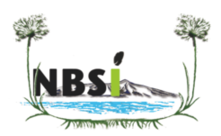Origin of the people living in the basin today
The ancient oral traditions of the communities living in the Rift Valley suggest that there were early Iron Age settlements of Nilo-Hamitic tribes, which that became progressively displaced by movements of Bantu peoples.
The Kenyan portion of the Great Rift, where Naivasha lies, has experienced different tribes coming from opposite directions. Maasai pastoralists are the first to appeare in the basin, coming from the dry pastures of what is today Sudan. They might have reached Naivasha during the XVth (15th) century Their expansion extended well into today's Tanzania.
Bantu migration, involving several tribes, came a little later, taking place sometimes during the XVI (16th) entury, the peoples moving from Central African forests towards similarly forested highlands such as the Aberdare Mountain range (locally called Nyandarua) and the slopes of Mount Kenya. The Kikuyu, the most populous tribe living in the Basin today, established stable settlements and began farming fertile volcanic slopes on both sides of the Nyandarua range, which is regarded today as their natural homeland. Accounts of early European explorers describe the Kikuyu as a fierce tribe, comprising short but stout, muscular men. The Kikuyu were feared by Arab traders in particular for their use of poisoned arrows; several caravans travelling from Mombasa through Kikuyulands during the XIX (19th) century were attacked and destroyed.
Arab traders came to the Basin for the first time during the late XVI century by travelling westwards from the Indian Ocean coast in search for valuable tradable goods, such as ivory and slaves. At that time, a flourishing slave trade developed on the East African coast supplying Arab emirates. The same period saw the birth of Swahili as a sort of pidgin Arabic language utilised by Arab traders to communicate with local bantu tribes. Very soon, however, Swahili developed into a language in its own right, with a rich and original literature that in its early period of formation comprised a large number of theatre plays and poems.
The first Europeans arrived to the Naivasha Basin in the late XIX century. They came from the coast following Arab trade routes.



